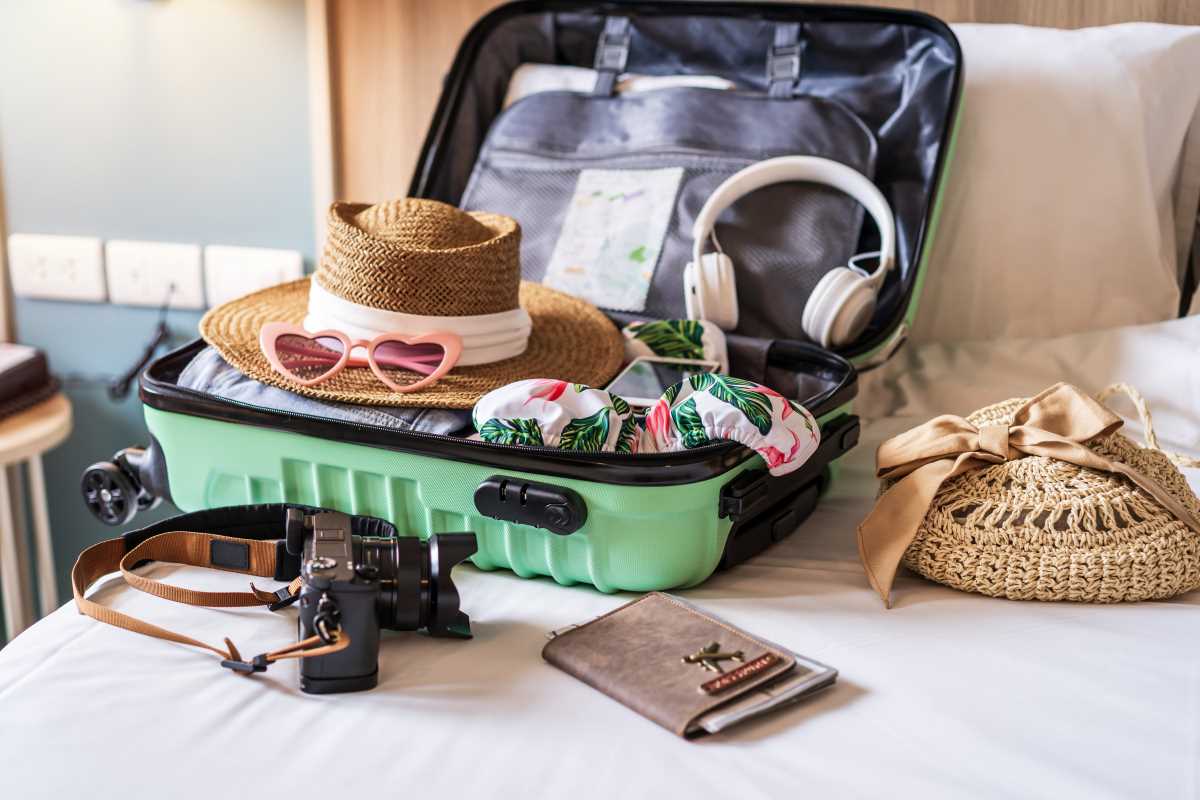Packing for a family trip can feel like preparing for a small expedition. Between kids’ clothes, snacks, toys, and your own essentials, it’s easy to end up with overflowing suitcases and a backseat stacked with “just in case” items. If you’ve found yourself trying to wrestle multiple bags through the airport while balancing a toddler on your hip, the idea of packing light might sound like an impossible dream.
But here’s the good news: traveling light with your family is totally doable! It may take some planning and strategy, but trimming down your luggage can save you time, stress, and even money. With fewer bags to haul around, you’ll feel freer to enjoy your adventure rather than worrying about all the stuff you brought with you. Whether you’re heading to the beach, a city, or somewhere off the beaten path, these tips will help you pack smart and travel light with your crew.
Traveling light isn’t just a convenience; it’s a mindset that can make your trip more enjoyable. Fewer bags mean less stress when navigating airports, packing the car, or hopping on public transportation. Packing light gives you more flexibility to handle unexpected changes, like a canceled flight or extra souvenirs on the way home.
Lifting the Weight of Travel
For families, packing light also means less chance of things getting lost or misplaced. When you’ve got fewer bags and less stuff, it’s easier to keep track of everything, especially when dealing with squirmy kids or tight schedules.
Most importantly, packing light encourages you to focus on what truly matters during your trip. Instead of being weighed down by things, you’re free to create memories, explore, and enjoy the experience together.
Packing light is simple enough for a solo traveler or a couple, but things get trickier when kids are involved. Here are a few of the common challenges you might face and how to rethink them.
- Kids need stuff: From diapers to snacks to their favorite stuffed animal, children often need more items than adults. But with a little planning, you can prioritize and pack only what’s truly necessary.
- What if we forget something? This is the classic packing anxiety that leads to overpacking. Keep in mind that most items (diapers, sunscreen, snacks) can be purchased at your destination if needed.
- Limited space: Families often rely on smaller accommodations like vacation rentals or hotel rooms, so traveling light can help keep your space neat and manageable.
- Different needs for different ages: Packing for a toddler is very different from packing for a teenager. Customizing your packing list for each family member keeps things efficient and organized.Practical Tips for Packing Light
Now that we’ve touched on how packing light helps, here are some tried-and-true strategies to minimize your luggage without sacrificing what your family needs.
1. Plan Your Outfits Ahead
The first rule of packing light? Don’t wing it. Before you even open a suitcase, take some time to plan outfits for each day of your trip. This avoids the “just in case” syndrome, where you toss in too many clothes because you don’t know what to expect.
Stick to versatile pieces that can be mixed and matched. For example, pack neutral tops that pair easily with different bottoms or layer pieces that work for multiple temperatures. Each family member should have a capsule wardrobe of 3-4 tops, 2-3 bottoms, and 1-2 pairs of shoes.
Don’t forget to account for laundry! If your trip is longer than a week or if your accommodation has laundry facilities, plan to do a load during your stay instead of packing extra clothes.
2. Use Packing Cubes to Stay Organized
Packing cubes are a game-changer for families. Not only do they save space by compressing your clothes, but they also keep things organized. Assign each family member a different color packing cube to make it easy to identify whose items are whose.
You can also organize packing cubes by category, such as one for swimwear, one for pajamas, and one for everyday outfits. This method makes it much easier to grab what you need without rummaging through the whole suitcase.
3. Prioritize Essentials
When it comes to packing for kids, think about the must-haves instead of the nice-to-haves. For younger children, essentials might include a beloved stuffed animal, snacks, and enough diapers and wipes for the first 24 hours. For older kids, focus on comfort items and any gear for planned activities, like a swimsuit or hiking boots.
You probably don’t need to pack an entire week’s worth of diapers or an array of toys. Many baby supplies and kid-friendly items can be purchased at your destination, and entertainment is often as simple as a coloring book or a new app on your phone.
4. Invest in Travel-Sized Gear
Bulky equipment like strollers, cribs, and car seats can take up a lot of space, but they’re often unavoidable if you’re traveling with little ones. The good news is that many brands now make travel-sized versions of these essentials.
Look for lightweight strollers that fold down compactly or inflatable booster seats for older kids. Some hotels and vacation rentals also provide baby gear, so check ahead to see what you can borrow instead of bringing your own.
5. Share Luggage
Instead of packing a separate suitcase for each family member, try combining items into fewer bags. For example, you might dedicate one suitcase to clothes for you and your partner while the kids share a separate bag.
Sharing luggage reduces the overall number of bags you need to carry and makes it easier to keep everything organized.
6. Pack Multi-Purpose Items
When every inch of space counts, multi-purpose items are your best friend. A lightweight scarf can double as a blanket or a sunshade, and a stroller organizer can triple as a diaper bag and snack station.
For toiletries, look for products that serve multiple purposes, like a shampoo-and-body-wash combo or a moisturizer with built-in sunscreen.
7. Skip the “What-Ifs”
This is one of the hardest parts of packing light, but it’s essential. Avoid packing for every single possible scenario. Instead, pack for the likely scenarios and remind yourself that you can buy or borrow anything else if the need arises.
For example, you don’t need to bring a full medicine cabinet “just in case.” Stick to basic first-aid supplies (like band-aids and ibuprofen) and buy anything else if and when it’s needed.
8. Use the Right Bag
Lastly, choosing the right luggage can make all the difference. Look for lightweight, durable suitcases or travel backpacks with plenty of compartments for organization. If you’re flying, aim for carry-on bags to avoid the hassle and cost of checked luggage.
For day trips, bring a compact backpack or crossbody bag to keep essentials like snacks, water, and entertainment close by without lugging a massive tote.
 (Image via
(Image via





